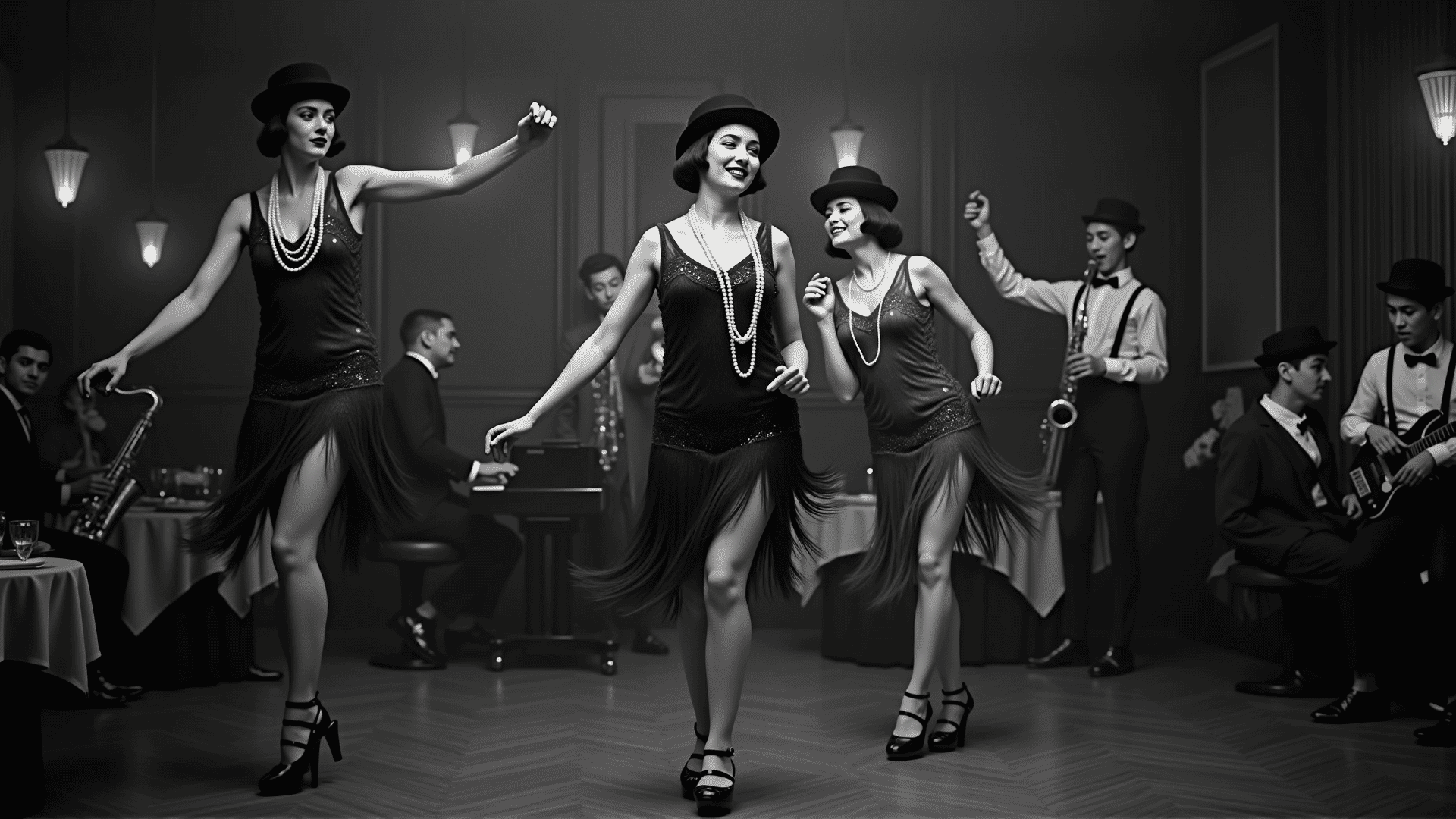The 1920s is remembered as a decade that splashed vibrant colors and exhilarating rhythms across the American landscape, embodying a spirit of liberation and sophistication. This era, often referred to as the Roaring Twenties, saw dramatic transformations in fashion that aligned with broader cultural shifts fueled by jazz music and social change.
The vibrant jazz music scene played a crucial role in shaping the fashion trends of the time. Jazz, with its energetic and improvisational style, mirrored the societal shift towards independence and experimentation. As jazz gained popularity, its influence extended beyond music, affecting the cultural fabric of American society, including its fashion sense.
Women's fashion in the 1920s underwent a significant transformation. The decade marked the rise of the flapper, a new kind of woman defined by her independent spirit and bold fashion choices. Flappers embraced shorter hemlines, with skirts hovering just below the knee—scandalous by previous standards. The newfound freedom in women's dressing was characterized by drop-waist dresses and boyish silhouettes, replacing the restrictive corsets of earlier periods. These garments were often embellished with sequins and intricate beadwork, reflecting the exuberance of jazz.
The cloche hat became a quintessential accessory of the decade, complementing the sleek and streamlined outfits. The snug-fitting hat was designed to sit low on the forehead, allowing women to flaunt their fashionable bobbed hairstyles. This look was both modern and practical, embodying the spirit of an era eager to break away from tradition.
Men's fashion also embraced the shift towards a more relaxed and polished aesthetic. The traditional suit was maintained but with slight modifications to create softer lines and looser fits. The influence of jazz was evident in the popularization of the zoot suit, characterized by exaggerated baggy trousers, high-waisted, cinched at the ankle, and a long jacket. The daring nature of these designs resonated with the energetic tempos of jazz music.
Footwear, too, saw changes aligned with the ethos of convenience and style. Women frequently wore T-strap heels, providing functionality for the spirited dances that jazz music inspired. For men, two-tone shoes became a fashionable statement, offering a hint of flair to their ensemble.
The jazz age symbolized a break from the past, embodied by a blooming cultural and social atmosphere. This spirit of innovation and daring self-expression transformed the fashion landscape, leaving a legacy that continues to inspire the world of fashion today. The 1920s were not just about clothes; they represented an era where style and culture danced together in perfect harmony, setting the stage for future generations to celebrate individuality and freedom.
